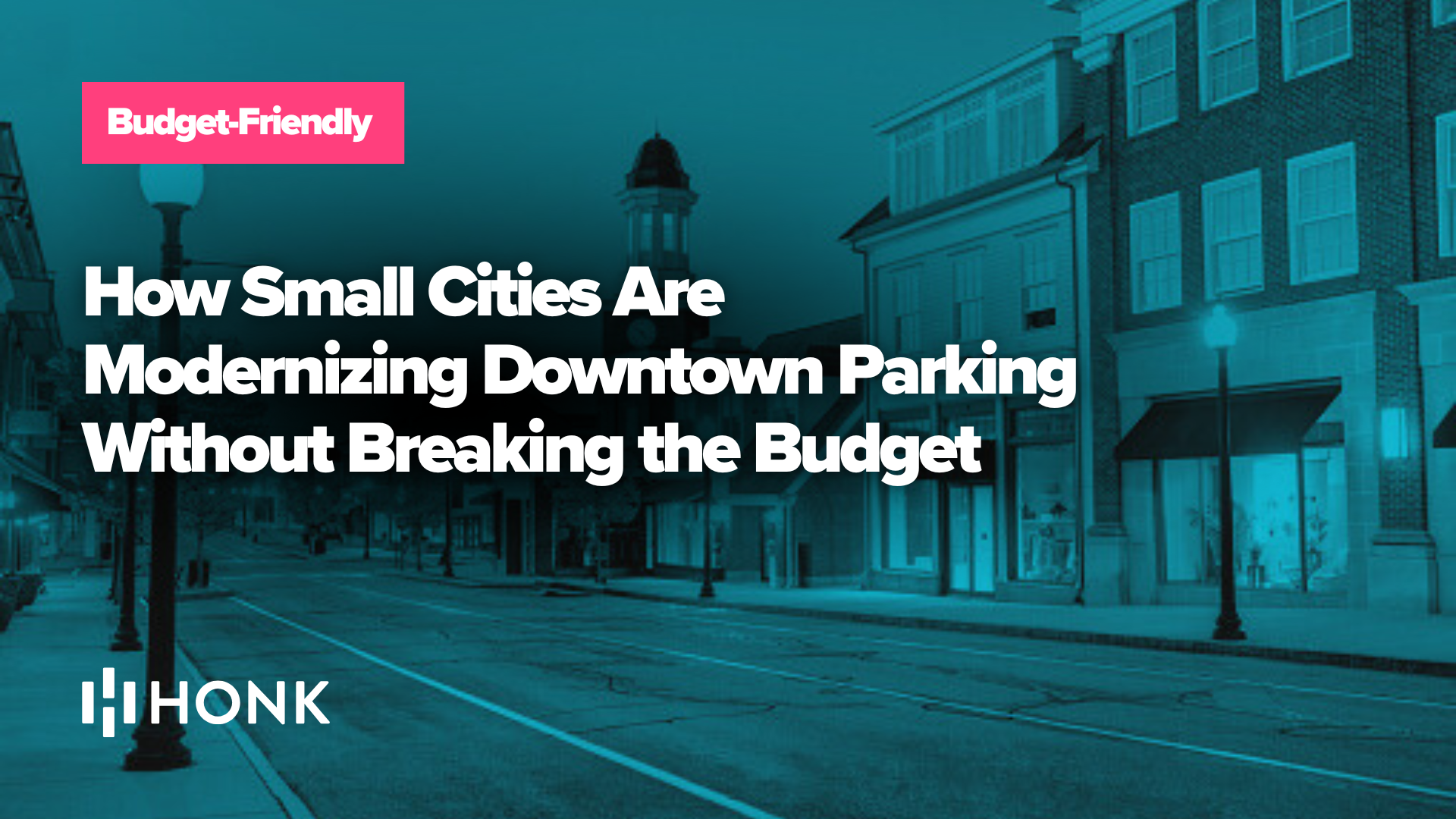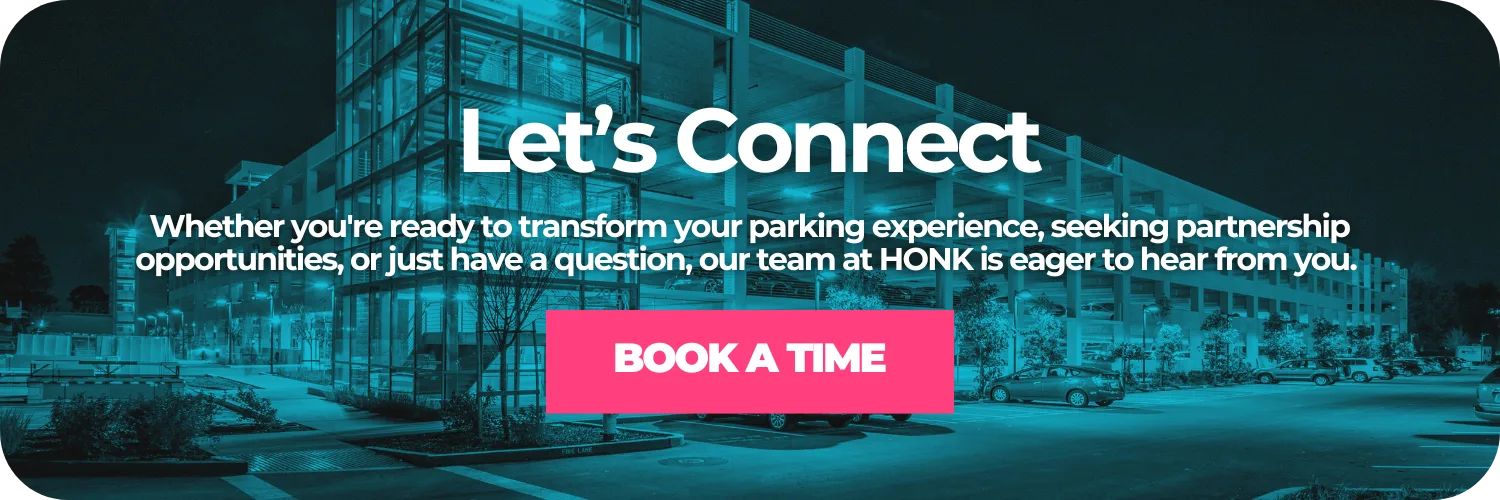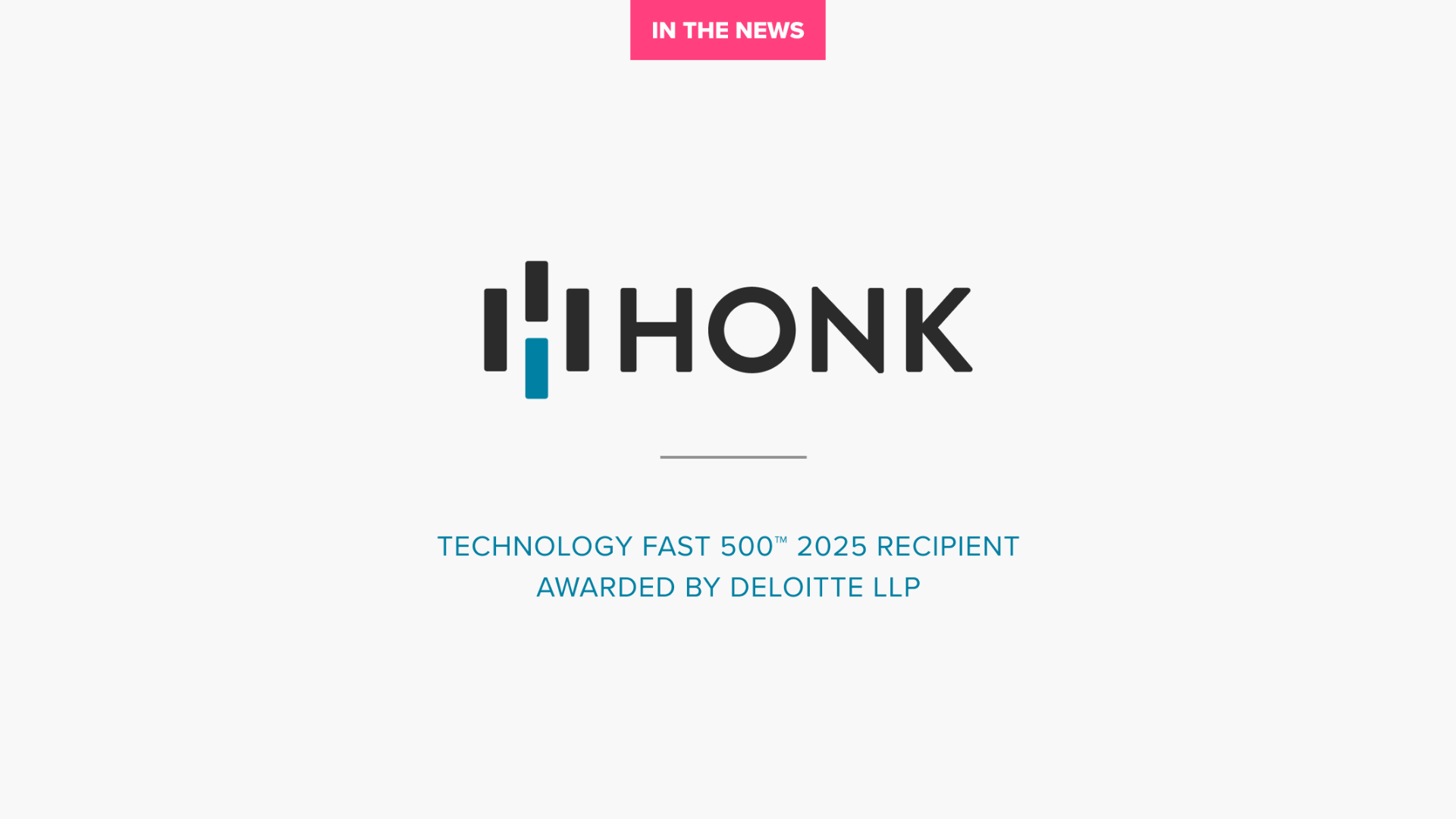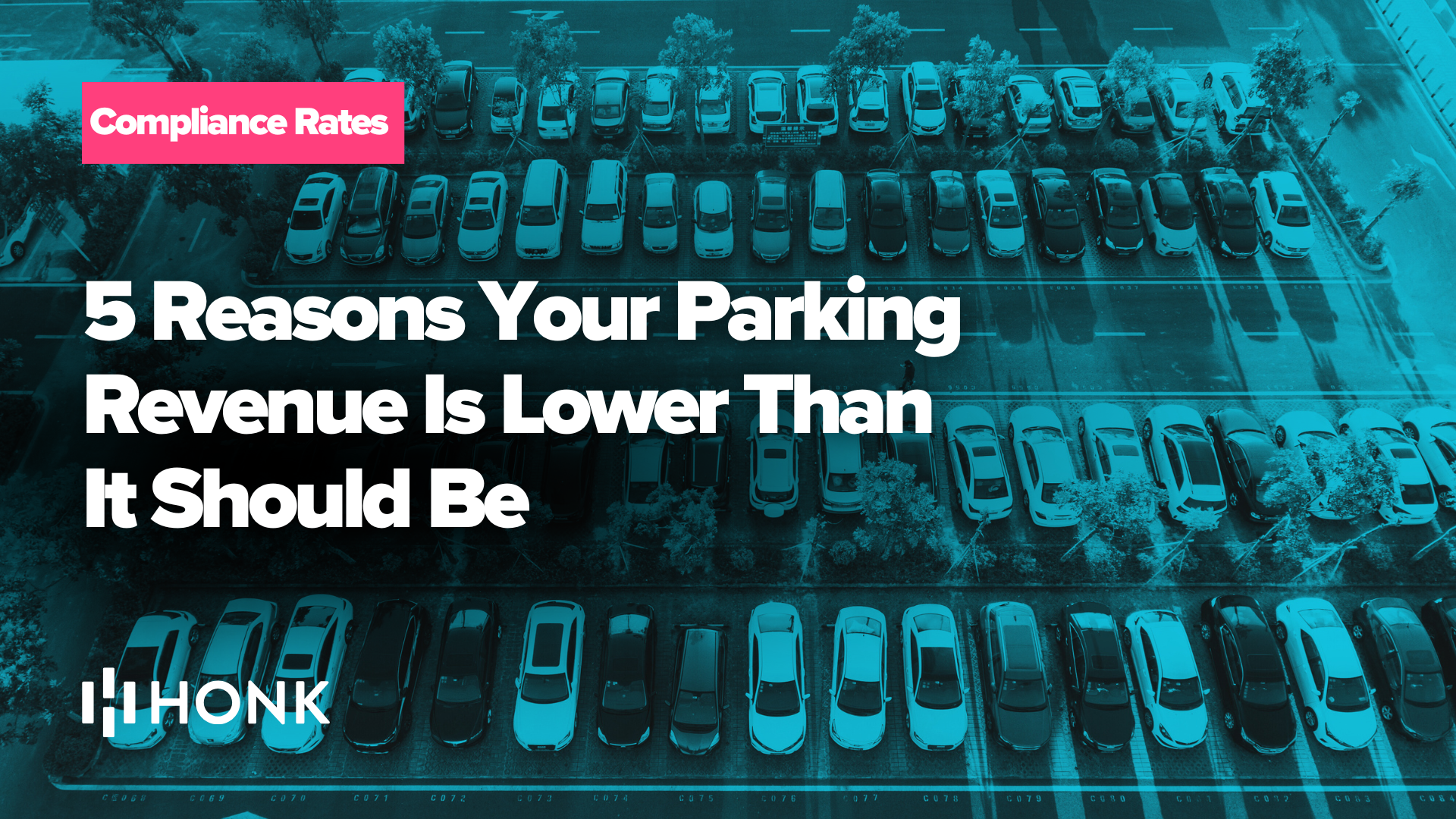Running a downtown parking operation in a small city comes with a unique set of challenges. You’re not managing hundreds of lots like a major metro area, but you’re also not dealing with simple rural parking where enforcement barely matters. You’re right in that sweet spot where parking directly impacts your local economy, your downtown businesses depend on convenient access, and your budget doesn’t have room for waste. When a small city’s parking system frustrates visitors or fails to generate expected revenue, it’s not just an operational headache. It’s a missed opportunity for economic growth. The good news is that modernizing your parking infrastructure doesn’t require a seven-figure investment or years of implementation. Small cities across North America are making the leap to digital parking solutions that pay for themselves quickly while dramatically improving the downtown experience.
At HONK, we work with municipalities of all sizes, from major metros to smaller communities with just a few downtown blocks. We’ve seen firsthand how the right technology can transform parking from a cost center into a revenue generator, all without the massive capital expenditures that used to be required. If you’ve been putting off parking modernization because you assumed it was too expensive or too complicated, it’s time to take another look.
The Real Cost of Doing Nothing
Before we talk about solutions, let’s be honest about what it’s costing you to maintain the status quo. Many small cities have been operating the same parking system for a decade or more, with aging meters, manual collection routes, and limited data about how their parking assets are actually being used. This feels familiar and safe, but it’s quietly draining resources in ways that aren’t always obvious until you add them up.
First, there’s the direct cost of maintaining physical infrastructure. Those coin meters or older pay stations require constant upkeep. They jam, they break, they get vandalized, and every service call costs money. Cash collection routes require staff time and vehicle expenses, and the cash itself needs to be counted, reconciled, and deposited. Studies show that handling cash costs businesses around 9.1% of collected revenue in operational overhead. For a small city collecting $200,000 annually in parking fees, that’s over $18,000 going straight to handling the money rather than improving services.
Then there’s the revenue you’re not collecting at all. Without real-time data, you can’t tell which lots are underutilized or overpriced. You don’t know your actual compliance rates or peak demand times. Visitors who don’t carry cash simply don’t pay, and your enforcement staff can’t be everywhere at once. Digital parking solutions have shown that compliance improves significantly when payment is easy and convenient, often by 15-20%. That’s real money you’re leaving on the table every single day.
Finally, there’s the opportunity cost. Your downtown businesses are competing with suburban shopping centers and online retail. When parking is confusing, inconvenient, or feels outdated, you’re giving shoppers one more reason to go elsewhere. A modern parking system isn’t just about collecting fees. It’s about removing friction from the downtown experience and making it easier for people to support local businesses.
What Modern Parking Actually Looks Like in a Small City
When we talk about modernizing parking, we’re not suggesting you rip out everything and start from scratch with expensive new infrastructure. The beauty of today’s technology is that it’s software-based rather than hardware-based. That means you can transform your parking operation without replacing every meter or installing costly new equipment.
Modern parking in small cities typically centers around mobile payment options. Drivers use their smartphones to pay for parking by scanning a QR code on existing signage or using an app. They select their parking duration, pay with Apple Pay, Google Pay, or any major credit card, and receive a confirmation. If their plans change, they can extend their time remotely without walking back to a meter. When their session is about to expire, they get a text reminder with an option to add more time.
For the city, this means payments flow directly into your account with complete digital records. There’s no cash to collect, no coins to count, and no paper tickets to reconcile. Your enforcement team has real-time visibility into which vehicles have paid and which haven’t. Instead of checking windshields for paper receipts, they use a simple handheld device or app that shows payment status by license plate.
The City of London, Ontario was the first municipality in North America to launch app-free tap-to-pay parking across all downtown locations. Their parking manager noted that the technology gave them “the same performance of a pay station without the prohibitive cost, and all the functionality of the app without the download.” That’s the key for small cities: you get big-city capabilities without big-city budgets.
Behind the scenes, you gain access to data that was never available before. Cloud-based parking management systems provide dashboards showing real-time occupancy, revenue by location, peak usage times, and average parking duration. This information lets you make informed decisions about pricing, enforcement priorities, and future parking needs. You’re no longer guessing. You’re managing based on actual data.
The Budget-Friendly Path to Implementation
Here’s where the conversation usually stalls. City managers and parking administrators know that modernization would be beneficial, but they assume it requires a budget allocation that won’t get approved. The reality is quite different from what many people expect.
Unlike traditional parking infrastructure that requires major upfront capital expenditures, modern digital parking solutions typically operate on a transaction-based or software-as-a-service model. You’re not buying expensive hardware that will be outdated in five years. You’re essentially subscribing to a platform that handles payments, enforcement, and reporting. The cost per transaction is usually far lower than the overhead of collecting and processing cash, which means the system can pay for itself purely through operational savings.
Some cities start even smaller by piloting digital payments in just one or two high-traffic downtown lots. You learn how the system works, see the results firsthand, and build confidence before expanding citywide. This phased approach spreads costs over time and lets you demonstrate success to stakeholders before committing to a full rollout.
The installation process itself is surprisingly simple. For QR code-based systems, you’re essentially putting up new signage with codes that drivers can scan. The heavy lifting happens on the software side, where your lots are configured in the system and your payment processing is set up. Many cities are operational within weeks rather than months.
You also don’t need to retire your existing meters immediately if budget constraints make that difficult. Hybrid systems let drivers choose between the old meter and the new mobile payment option. Over time, as usage shifts to digital, you can gradually phase out physical equipment without forcing an immediate wholesale replacement.
Seeing Results Without Waiting Years
One of the most compelling aspects of modern parking technology is how quickly you start seeing returns. This isn’t a long-term infrastructure investment where benefits materialize five years down the road. The improvements happen almost immediately once the system goes live.
Compliance typically jumps within the first few weeks. When paying is easier than not paying, more people simply comply. You’ll see higher collection rates, fewer disputes, and less enforcement friction. Cities using digital payment systems report that compliance improvements alone often cover the cost of the new system within the first year.
Operational costs drop right away because you’re eliminating or reducing cash handling, meter maintenance, and manual collection routes. Staff time previously spent on these tasks can be reallocated to enforcement, customer service, or other priorities. The savings are tangible and immediate, not theoretical benefits that might appear someday.
Downtown businesses notice the difference too. When parking becomes less of a hassle, people are more willing to visit. Shoppers who can easily extend their parking time are more likely to browse another store or grab lunch rather than rushing back to feed a meter.
Revenue optimization is another quick win. With data-driven insights, you can identify pricing opportunities you never knew existed. Maybe your main lot could handle higher rates during weekend events. Maybe a less convenient lot needs a slight rate reduction to boost usage. The data tells you exactly what’s working and what isn’t.
Making the Business Case to Your Council
Getting budget approval for parking modernization requires presenting a clear business case that addresses both the financial and strategic benefits. The good news is that the numbers usually speak for themselves once you lay them out properly.
Start with the operational savings. Calculate what you’re currently spending on cash handling, meter maintenance, enforcement inefficiencies, and administrative overhead. Then project what those costs would look like under a digital system. For most small cities, the savings range from 20-35% of current operating costs. That’s not a trivial improvement. It’s real money that can be redirected to other city priorities.
Next, estimate the revenue uplift from improved compliance and better pricing strategies. Conservative projections typically assume a 10-15% increase in collected revenue once the system is fully implemented. For a city collecting $300,000 annually, that’s an extra $30,000-$45,000 per year. Combined with the operational savings, you’re often looking at a system that pays for itself within 12-18 months.
Don’t forget the qualitative benefits that matter to elected officials. Modernizing downtown parking supports local businesses by making the area more accessible and visitor-friendly. It reduces complaints from residents and merchants about confusing or inconvenient payment systems. It positions your city as forward-thinking and responsive to changing expectations.
Many cities have successfully framed parking modernization as part of a broader downtown revitalization initiative rather than as an isolated technology project. When you connect the dots between easy parking, economic development, and community vitality, the investment becomes much easier to justify.
Learning from Cities That Made the Move
Small cities that have modernized their parking consistently report that the transition was easier and the results were better than they initially expected. The pattern is remarkably consistent: initial skepticism followed by rapid adoption and measurable improvements.
Cities implementing smart parking solutions often see compliance rates improve by double-digit percentages within the first few months. The convenience factor drives this change. When people can pay from their phones, extend their time remotely, and receive reminders before expiration, they’re far more likely to comply than when payment requires finding a meter and scrounging for coins.
The data capabilities consistently exceed expectations. Parking managers who’ve never had access to real-time occupancy data or detailed revenue analytics suddenly have dashboards full of actionable insights. They can see patterns they never noticed before, identify problems early, and make data-backed decisions rather than relying on hunches.
Enforcement becomes more efficient and less confrontational. When officers have instant visibility into payment status via license plate lookup, they spend less time checking windshields and more time covering territory. False tickets decrease because the data is more accurate. The whole enforcement process becomes cleaner and more professional.
Perhaps most importantly, the downtown experience improves in ways that benefit everyone. Shoppers spend less time dealing with parking logistics and more time enjoying downtown. Business owners see increased foot traffic and fewer complaints about parking hassles.
Taking the First Step Forward
Modernizing your downtown parking doesn’t have to be a massive, risky undertaking. It can be a methodical, budget-conscious process that starts small and scales as you see results. The key is to stop viewing parking technology as an expensive luxury and start seeing it as a practical tool that pays for itself while making operations more efficient and effective.
We work with small cities every day that are making this transition successfully. They’re not spending millions on infrastructure. They’re implementing smart, scalable solutions that fit their budgets and deliver measurable returns. The technology exists, it’s proven, and it’s more accessible than ever before.
If your downtown parking system feels stuck in the past, if you’re losing revenue to outdated processes, or if local businesses are asking when parking will finally get easier, you owe it to your community to explore what’s possible. The barrier isn’t budget. It’s often just inertia and the assumption that change must be expensive and complicated.
At HONK, we’ve built our platform specifically to help parking operators of all sizes step into the modern era without breaking the bank. Whether you manage three lots or thirty, whether your budget is tight or flexible, there’s a path forward that makes financial and operational sense. Your downtown deserves better parking, your businesses need it, and your budget can handle it. All that’s missing is the decision to get started.





